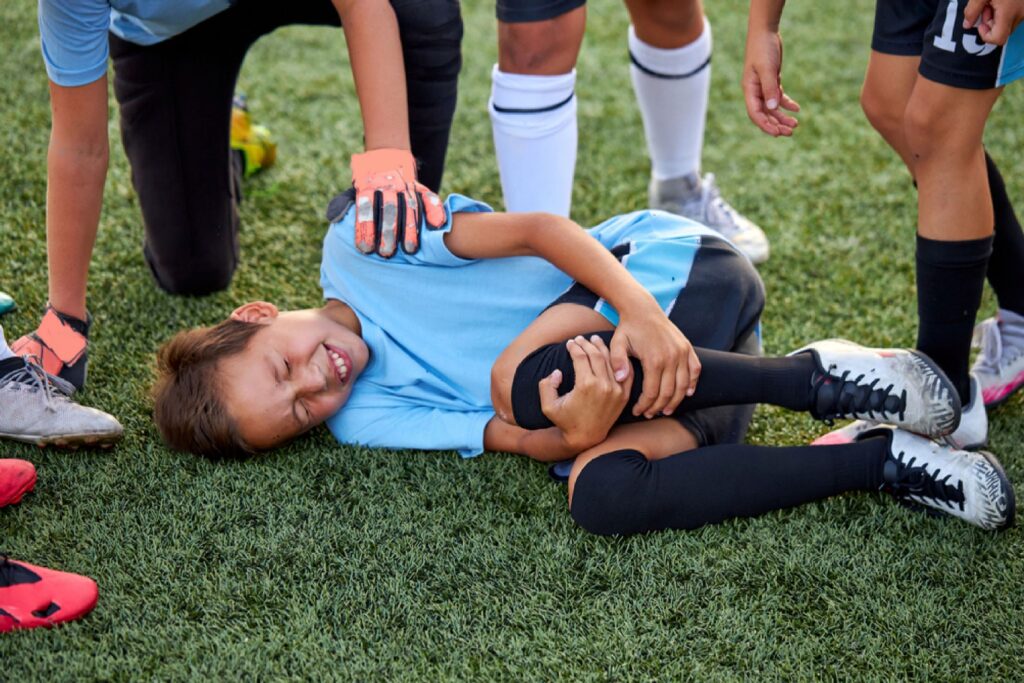Prevent Spring Sports Injuries – Kids
Six Tips to Prevent Kids’ Spring Sports Injuries
Prevent Spring Sports Injuries – KidsFoot & ankle surgeons stress importance of safe transition from winter to spring sports.
In today’s competitive youth sports landscape, many young athletes transition from playing winter to spring activities without considering the increased risk of incurring a sports-related injury. The American College of Foot and Ankle Surgeons (ACFAS) encourages parents to help their athletes play it safe and take the necessary precautions to prevent foot and ankle injuries that can occur when going from indoor to outdoor sports.
Different Set of Concerns When Transitioning Between Seasons
“While sports-related injuries can occur during any season or activity, transitioning from winter to spring sports can bring about a different set of concerns,” said Gregory Catalano, DPM, FACFAS, a Massachusetts-based foot and ankle surgeon and Fellow Member of the American College of Foot and Ankle Surgeons.
Moving From Varying Playing Surfaces
“Participating in sports during the spring vs. the winter season can require athletes to move from one type of playing surface to another. Competing on these different surfaces with varying impact can add stress to an athlete’s foot or ankle. And going from sport to sport without allowing time for the muscles and bones to rest can lead to overuse injuries, especially in younger athletes whose bones are still developing.”
Six Tips To Prevent Foot and Ankle Injury
If your child plans on participating in a sport this spring after coming off of a winter sports season, consider these six tips to help protect them from serious foot or ankle injuries:
- Get a preseason health and wellness checkup. Having a medical evaluation in advance to the start of a season, can help identify possible health concerns that have the potential to lead to injury.
- Take it slow. Ask your child’s coach to gradually increase their playing time during practice and avoid pushing them full throttle. It is important that your child’s feet and ankles become accustomed to the level of activity required for the sport they are entering. Adequate conditioning can help keep a player free of injury and improve his or her performance during the season.
- Wear proper, broken-in shoes. Different sports require different shoe gear. Wearing the appropriate, well-fitting, broken-in athletic shoes designed for a specific sport can eliminate heel and toe discomfort and improve your child’s performance.
- Check their technique. Most parents are their child’s biggest cheerleaders. As such, you may be able to notice a difference in your child’s form and technique, which is often a tell-tale sign that something may be wrong. Ask your child’s coach to notify you if s/he is placing more weight on one side of the body or if it is something more obvious like a limp.
- Insist on open communication if your child has pain. Express to your child athlete that s/he should inform you and the coach of any pain or discomfort as soon as it occurs. Overuse injuries can be subtle and develop overtime, such as Achilles tendonitis and shin splints. The sooner an injury can be detected, the sooner it can be treated.
- If an injury occurs, remember RICE. Often, an injured foot or ankle can be healed with rest, ice, compression and elevation (RICE). If your child complains of foot or ankle pain, s/he should take a break from playing and allow time for recovery. If the pain persists, it may be the cause of something more serious. Consult a foot and ankle surgeon for a complete evaluation.
https://www.foothealthfacts.org/article/six-tips-to-prevent-kids-spring-sports-injuries




